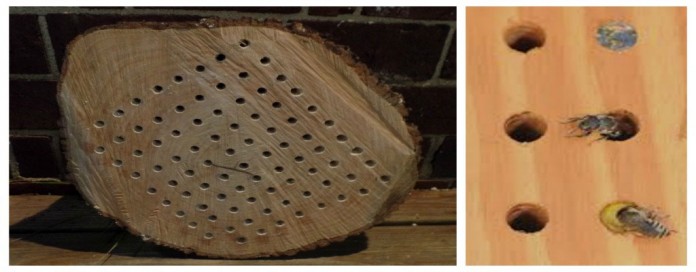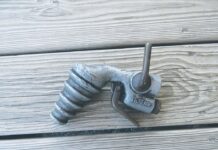The first bee that comes to mind may be the honeybee, but native bees actually make up a larger portion of the U.S. bee population.
Native bees don’t produce honey, but they are critical pollinators of plants we enjoy in nature and food we enjoy eating. Attracting native bees to your yard and garden helps your landscape thrive and supports surrounding ecosystems.
Keep bees, the easy way
‘Keeping’ native bees is as easy as providing shelter and access to adequate food and water.
Native bee species either nest in-ground or above-ground. Above-ground nesters look for preexisting cavities or create cavities in nature with mud or by burrowing in wood. A bee box provides the right size and shape cavities for some of our area’s most prolific native pollinators.
Related: Giving pollinators the right of way
Hang bee boxes close to pollen and water sources. I affix bee boxes to fence posts surrounding my food gardens. Experts recommend boxes be at least 3 feet off the ground, faced toward the morning sun.
How to build a bee box
Any wood material can be turned into a bee box as long as it is untreated and larger than 4 inches by 6 inches.
Supplies
- Untreated wood (block, lumber or scrap firewood)
- Drill with 5/16” bit
- Roof material (metal or wood) and hardware to attach
- Anchoring hardware to hang
Directions
- Mark wooden block with a grid pattern, holes spaced about 1 inch apart.
- Drill holes 4 inches to 8 inches deep into the wood, depending on size of block. Leave at least a 1/2-inch back wall.
- Paint or stain outside surfaces only (if desired).
- Attach a roof to provide protection from weather elements.
- Attach anchoring hardware.
- Hang box.
How it works
Females gather food, roll it into a bundle and place it at back of the hole. Next, they lay an egg near the food bundle and then seal the section off. They repeat the process until several eggs are capped inside each cavity.
New bees emerge in spring. Bees continue to build nests and hatch new bees during the warm weather months. Bees are dormant during cold weather.
A free PDF guide to learn about native bee species in Ohio available at http://pollinator.org/PDFs/OhioBeeGuideFINAL.pdf












